Speech Therapy is About the People
As I attempted to put away my holiday décor this weekend, I turned on Minimalism, a Netflix movie. The film follows Joshua Fields Millburn & Ryan Nicodemus, known as “The Minimalists,” and talks about how to live more meaningful lives with less. The sentiments of the film resonated with me. In our profession, the people are the most important part. The stuff, at times, adds noise, and sometimes I forget this.
Speech Stuff
Daily, I am inundated by advertisements via snail mail, e-mail, Facebook, Instagram, friends and colleagues about materials, products and apps that make us become better SLPs. I thought about this, and I realize that good speech therapy doesn’t necessarily need much stuff. Here is a very short list of my favorite speech therapy tools:
Speech Therapy Tools: Back to the Basics
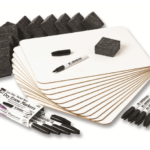 1. Dry erase board and markers
1. Dry erase board and markers
• Write/draw a schedule for session
• Draw pictures for describing and comparing/contrasting
• Telling a story
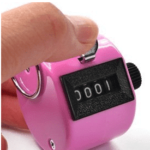 2. Counter
2. Counter
• Count repetitions of speech sounds (this is my sole articulation tool)
• You can make this more exciting– go on a nature walk and click each time you see/say something with the target sound
 3. Books
3. Books
• Use them to work on speech and language
• Bring in books that are visually appealing and support child’s interests
• Supports grade-level curriculum
Learn everything you need to know about literacy-based intervention!
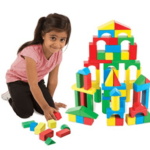 4. Blocks
4. Blocks
• Tackle requesting, commenting and turn-taking while being creative
• Work on describing (color, size, shape)
• Work on spatial concepts (in, behind), following directions
Children have used the rectangular blocks as beds, food, stores, clothing items and so much more!
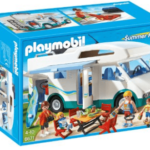
• Tackle requesting, commenting and turn-taking while watching something in motion
• Work on describing (color, size, shape)
• Work on wh-questions, inferencing (Oh no! A flat tire. What will happen next?), sequencing (First, let’s pick up Mama. Then, we will go to the store. Last, we’ll make dinner!)
So, let’s back to basics. In the spirit of setting goals for 2017, we would like to introduce the Minimalism Challenge! If had had to carry everything you would use for speech therapy in a single bag or box, what would be your must-have tools? Leave a comment below.

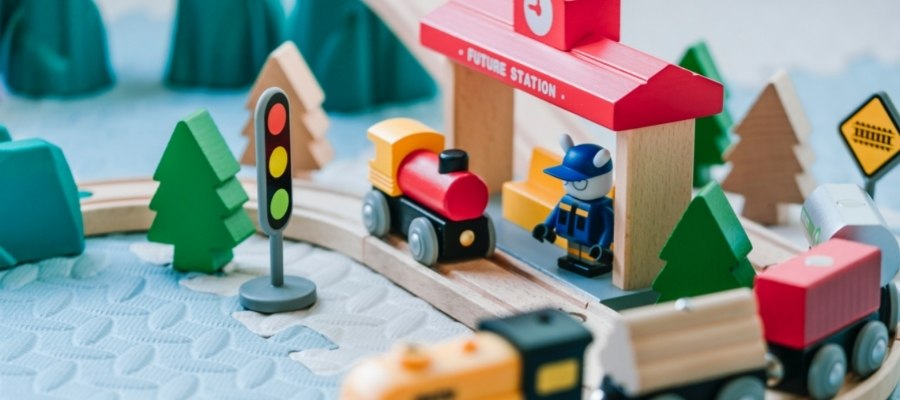

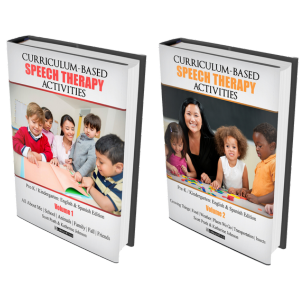
Your suggestions are spot-on. I also tell SLPs, teachers, etc to look at their own kids and take note of what attracts them. Personally, I love Amazon’s sturdy boxes and mailing bags. There are countless uses and creative ideas for them. And they’re not “precious” or expensive. If I don’t have any, someone else is bound to have accumulated a stash.
Helen, thanks so much for the tip. Amazon boxes are EVERYWHERE, and I can see mailing bags being so functional for working on articulation and language. We appreciate your input, and keep up the creativity! — Phuong
Ha! I agree. I spent a year working as an SLP on Roatan in Honduras and I brought with only a small “bag of tricks” on the airplane. i t included much of what you listed above: blocks, books, art supplies, small cars & figures and some stuffed animals. Although at times I wished I had other supplies, this was what I used for a year with a wide variety of kids and disabilities! Even here at home in New Mexico, I gravitate towards books, handmade materials, art supplies/white boards, blocks and small animals or people, and always a few stuffed animals or squishy balls to squeeze. It is amazing the breadth of goals you can cover with these tools. Thanks for the reminder!
Kim, I love this! We are surely lucky to have so many resources here in the United States. I recall volunteering at an orphanage in Beijing, and it was a humbling (and important) experience. I also feel that your SLP-intuition to gravitate toward simple materials and books makes it easier for teacher and parents to potentially work on the same skills outside of the speech room. Thank you for your feedback, Kim!! — Phuong
Thanks for these ideas and the overall concept, Phuong! I agree with your ideas, especially the books, blocks, and white boards. I might also add a stuffed animal/doll/action figure (work on body parts, clothing, spatial concepts, following directions, colors, labeling, actions), a simple shapes puzzle (colors, numbers, spatial concepts, following directions, wh- questions, sequencing), a ball (taking turns, following directions, spatial concepts, imitation, peer interaction), and a deck of cards, whether it’s language/artic or just a themed or standard deck. In this age of Pinterest, Amazon, catalogs, and email blasts, sometimes a single bag of classic toys is enough!
Barrett! I love, love, love your last line. I also appreciate examples of HOW you use the materials. Thank you so much and keep up the awesome work. –Phuong
When I do evaluations for Early Intervention, I find that the little ones are so fascinated by two cups and an object to hide underneath! So a little set of stacking cups of different colors is a fun and compact tool, too!
Kelly,
A set of stacking cups of different colors and a surprise item is a great idea! And, I agree with you–compact toys are key. I find that as an itinerant SLP, I am schlepping various toys, boys and assessments around. So, things that take up less space are essential. Thanks for the tip! –Phuong